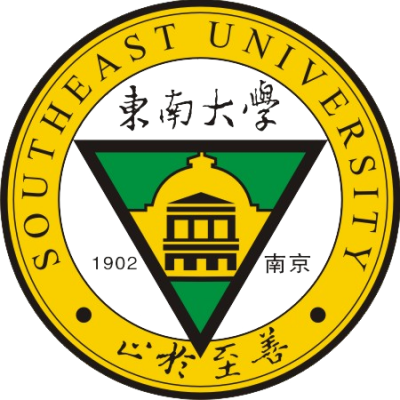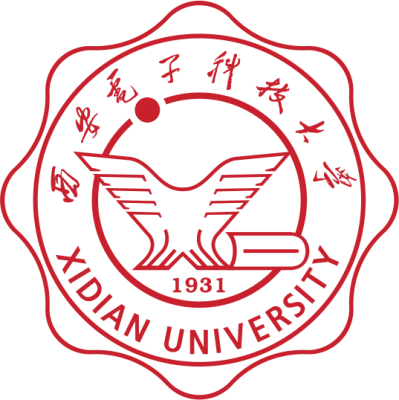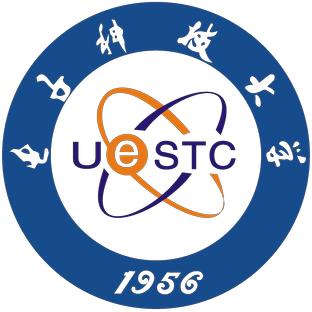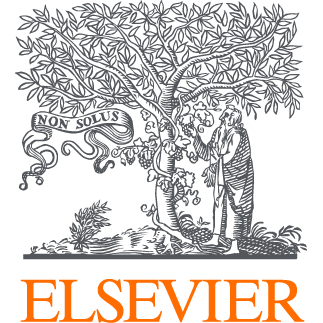Friday, May 24, Room 3B |
|
| 09:00 am-10:15 am | W03-S1 NOMA5G: Keynote Session #1 |
| 11:00 am-12:30 pm | W03-S2 NOMA5G: Technical Session I: Oral Presentation |
| 02:00 pm-03:00 pm | W03-S3-I NOMA5G: Technical Session II: Interactive Session |
| 03:00 pm-03:30 pm | W03-S4 NOMA5G: Keynote Session #2 |
Friday, May 24, 09:00 - 10:15
W03-S1 NOMA5G: Keynote Session #1
Keynote 1: Uplink NOMA Transceivers and Procedures in 3GPP
Dr. Yan Chen (Huawei, China)
Abstract To address the massive connectivity requirement from the future IoT networks, NOMA technologies together with different transmission modes have been comprehensively discussed in the 3GPP RAN1 working group for almost three years. A dozen of NOMA transmit schemes and various receivers have been proposed targeting to enhance the connectivity capability while keeping the receiver at reasonable complexity. Moreover, when applied in grant-free transmission for sporadic traffics, the transmission procedures involving both UE activity detection and multi-user decoding has also been warmly discussed too. This talk will give an introduction to the long story of NOMA in 3GPP, together with a technical digest of all the schemes proposed. Last but not least, the future directions and challenges to work on.
Bio: Yan Chen received her B.Sc. and Ph.D. degrees from Chu Kochen Honored College and Institute of Information and Communication Engineering in 2004 and 2009, respectively, from Zhejiang University. She was a visiting researcher at Hong Kong University of Science and Technology under supervision of Prof. Vincent Lau from 2008 to 2009. She joined Huawei Technologies (Shanghai) in 2009 and was the project leader of Huawei Internal project GREAT focusing on the study of energy efficient solutions for wireless radio networks from 2010 to 2013. From 2013 on, she is the project leader of Huawei’s multiple access research and standardization. Her research interests include massive connectivity IoT networks, non-orthogonal multiple access, grant-free transmissions, compressive sensing, and artificial intelligence enabled communications. She won the Award of IEEE Advances in Communication in 2017.
Keynote 2: Perspectives on Standardization and Research on NOMA
Dr. Afshin Haghighat (InterDigital, Canada)
Abstract: Multi-User Superposition Transmission (MUST) that was studied for the downlink of 4G LTE Rel-13 is considered the first Non-Orthogonal Multiple Access (NOMA) scheme intended for a cellular system. In 5G NR, NOMA transmission techniques have been considered and studied for uplink operations. In an uplink NOMA scenario, multiple user equipments (UEs) attempt to consume the same time/frequency resources available in the system. In NR, there are three main use cases considered for uplink NOMA, namely, massive machine to machine communication (mMTC), ultra reliable low latency communication (URLLC) and enhanced mobile broadband (eMBB) where each use case calls for its unique operational requirements. While NOMA detection and demodulation requires a more complex processing and treatment of the received signal, it is expected that a NOMA-based transmission could yield a better spectrum usage as well as higher flexibility of operation. This talk will provide a summary of the state and activities related to 3GPP NR NOMA standardization. Furthermore, it will also cover some of the ongoing research related to NOMA such as spreading sequence design, receiver complexity aspects, emerging use cases and applications of NOMA.
Bio: Afshin Haghighat is a Principal Engineer at InterDigital where he has been involved in advanced research and standardization of 5G NR and 4G LTE cellular systems. During the 5G NR Rel-15/16 NOMA studies, he led InterDigital NOMA-related research and 3GPP standardization activities. Prior to InterDigital, he worked at Harris Corporation (1998 – 2005) where he contributed and led the development of advanced software-defined modems for high data rate backhaul point-to-point microwave systems. Before joining Harris, he worked at SR Telecom (1997 – 1998) where he was responsible for design and implementation of various microwave integrated transceiver platforms for point-to-multipoint radios. His main areas of interest and expertise are RF Systems, Communications and Signal Processing. He received a Ph.D. in Electrical Engineering from Concordia University and an MBA from McGill University.
Friday, May 24, 11:00 - 12:30
W03-S2 NOMA5G: Technical Session I: Oral Presentation
| Comprehensive Study of NOMA Schemes |
Chao Wang (Huawei Technologies Co. Ltd., P.R. China); Yiqun Wu and Yan Chen (Huawei, P.R. China); Alireza Bayesteh (Huawei Technologies Canada Co., Ltd., Canada)
|
| User Activity Detection-based Large SCMA System for Uplink Grant-Free Access |
Sanjeev Sharma (Monash University, Clayton Campus, Melbourne, Australia); Kuntal Deka (IIT Goa, India); Yi Hong (Monash University, Australia)
|
| Rate-Splitting Multiple Access for Coordinated Multi-Point Joint Transmission |
Yijie (Lina) Mao (The University of Hong Kong, P.R. China); Bruno Clerckx (Imperial College London, United Kingdom (Great Britain)); Victor O. K. Li (University of Hong Kong, P.R. China)
|
| Energy Efficiency of RSMA and NOMA in Cellular-Connected mmWave UAV Networks |
Ali Rahmati, Yavuz Yapıcı, Nadisanka Rupasinghe and Ismail Güvenç (North Carolina State University, USA); Huaiyu Dai (NC State University, USA); Arupjyoti (Arup) Bhuyan (INL, USA)
|
| Coping Chip-level Asynchronicity of Coded Tandem Spreading Multiple Access for Massive Machine-type Communications |
Guoyu Ma (Beijing Jiaotong University, P.R. China); Bo Ai (Beijing Jiaotong University & State Key Lab of Rail Traffic Control and Safety, P.R. China); Fanggang Wang, Zhangdui Zhong and Yiyan Ma (Beijing Jiaotong University, P.R. China)
|
| On the Performance of NOMA and Coded Multicasting in Cache-Aided Wireless Networks |
Muhammad Norfauzi Dani (The University of Manchester, United Kingdom (Great Britain)); Daniel K. C. So (University of Manchester, United Kingdom (Great Britain)) |
Friday, May 24, 14:00 - 15:00
W03-S3-I NOMA5G: Technical Session II: Interactive Session
Room:
Papers are presented in interactive formats in the dedicated area.
| On Fair Secure Rate Maximization for NOMA Downlinks Using Quantum Key Distribution |
Zhaohui Yang and Jiancao Hou (King's College London, United Kingdom (Great Britain)); Wei Xu (Southeast University, P.R. China); Mohammad Shikh-Bahaei (Kings college London, United Kingdom (Great Britain))
|
| On Physical Layer Security of Multiple-Relay Assisted NOMA Systems |
Hongjiang Lei and Zixuan Yang (Chongqing University of Posts and Telecommunications, P.R. China); Ki-Hong Park (King Abdullah University of Science and Technology (KAUST), Saudi Arabia); Imran Shafique Ansari (University of Glasgow, United Kingdom (Great Britain)); Gaofeng Pan (Southwest University, P.R. China); Mohamed-Slim Alouini (King Abdullah University of Science and Technology (KAUST), Saudi Arabia)
|
| Downlink Precoder Design for Two-User Power-Domain MIMO-NOMA with Excess Degrees of Freedom |
Aravindh Krishnamoorthy (Friedrich-Alexander-Universität Erlangen-Nürnberg, Germany); Robert Schober (Friedrich-Alexander University Erlangen-Nuremberg, Germany); Zhiguo Ding (University of Manchester, United Kingdom (Great Britain))
|
| Sub-Function Superposition for Computation Over NOMA |
Fangzhou Wu (University of Science and Technology of China, P.R. China); Chen Li (University of Science And Technology of China, P.R. China); Guo Wei (University of Sci. & Tech. of China, P.R. China)
|
| Secrecy Analysis and Learning-based Optimization of Cooperative NOMA SWIPT Systems |
Ju Liu (Shandong University, P.R. China); Wali Ullah Khan (School of Information Science and Engineering, Shandong University, Qingdao, P.R. China); Furqan Jameel (University of Jyvaskyla, Finland); Zheng Chang and Tapani Ristaniemi (University of Jyväskylä, Finland)
|
| Multi-cell IDMA NOMA performance in NR deployment |
Loïc Canonne-Velasquez (InterDigital, Canada); Afshin Haghighat (InterDigital Communications, Canada); Prasanna Herath (InterDigital Inc., Canada)
|
| Dynamic User Pairing and Power Allocation for Throughput Maximization in NOMA Systems |
Cinnie Hsiung and Rui Huang (University of British Columbia, Canada); Yong Zhou (ShanghaiTech University, P.R. China); Vincent W.S. Wong (University of British Columbia, Canada)
|
| Rate Splitting for Asynchronous Uplink NOMA Systems with Cyclic Prefixed Single Carrier |
Hongwu Liu (Shandong Jiaotong University, P.R. China); Theodoros Tsiftsis (Technological Education Institute of Central Greece, Greece); Kyeong Jin Kim (Mitsubishi Electric Research Laboratories (MERL), USA); Kyung Sup Kwak (Inha University, Korea); H. Vincent Poor (Princeton University, USA)
|
|
Lens-based Millimeter Wave Reconfigurable Antenna NOMA |
Mojtaba Ahmadi Almasi and Roohollah Amiri (Boise State University, USA); Mojtaba Vaezi (Villanova University, USA); Hani Mehrpouyan (Boise State University, USA)
|
| Impacts of Residual Frequency Offset on the Sum Rate Performance of OFDM based NOMA Systems |
Yulong Mao (University of Electronic Science and Technology of China, Chengdu, P.R. China); Hongzhi Zhao and Youxi Tang (University of Electronic Science and Technology of China, P.R. China)
|
| UAV-assisted C-RAN with Rate Splitting under Base Station Breakdown Scenarios |
Alaa Alameer Ahmad and Jaber Kakar (Ruhr-Universitaet Bochum, Germany); Robert-Jeron Reifert (Ruhr-University Bochum, Germany); Aydin Sezgin (RUB, Germany)
|
| Linearly Precoded Rate-Splitting Techniques with Block Diagonalization for Multiuser MIMO systems |
Andre Flores Manrique (Pontifical Catholic University of Rio de Janeiro, Brazil); Rodrigo C. de Lamare (Pontifical Catholic University of Rio de Janeiro & University of York, Brazil)
|
Friday, May 24, 15:00 - 15:30
W03-S4 NOMA5G: Keynote Session #2
Keynote 3: Non-orthogonal Multiple Access for 5G and Beyond Wireless Networks
Prof. Octavia A. Dobre (Memorial University, Canada)
Abstract:
With the 3GPP Release 15 on the 5G New Radio out in 2018 and with Release 16 coming out this year, 5G is already a reality. While continuing to address the ever increasing demand for high data rates, ubiquitous connectivity and mobility provisioning, 5G and beyond wireless also aims to accommodate a massive number of devices with various traffic characteristics. Massive connectivity and ultra-reliable low-latency communications represent new features, which bring up major changes in the wireless ecosystem. In recent years, innovative technologies, e.g., non-orthogonal multiple access (NOMA), have been explored to satisfy the wide requirements in terms of capacity per area, peak and user experienced data rate, spectral and energy efficiency, mobility, connection density, and latency. This talk focuses on the role of NOMA in fulfilling the requirements of 5G and beyond wireless networks. The existing efforts, as well as the advantages and challenges of adopting NOMA in the new generation wireless networks, will be underlined. Finally, open research questions will be highlighted.
Bio:
Octavia A. Dobre is a Professor and Research Chair at Memorial University, Canada. Previously, she was with the Polytechnic Institute of Bucharest and New Jersey Institute of Technology, USA. She was a Visiting Professor with Massachusetts Institute of Technology, USA and Université de Bretagne Occidentale, France, as well as a Chair of Excellence at Universidad Carlos III of Madrid, Spain. Dr. Dobre was a Royal Society Scholar and a Fulbright Scholar. Her research interests include technologies for 5G and beyond wireless, blind signal identification and parameter estimation techniques, resource allocation, as well as optical and underwater communications. Dr. Dobre serves as the Editor-in-Chief of the IEEE Communications Letters and was an Editor of numerous prestigious journals. She has served as General Chair, Tutorial Co-Chair, and Technical Co-Chair at various conferences. She is a member-at-large of the Board of Governors of the IEEE Communications Society, and a Fellow of the Engineering Institute of Canada.























